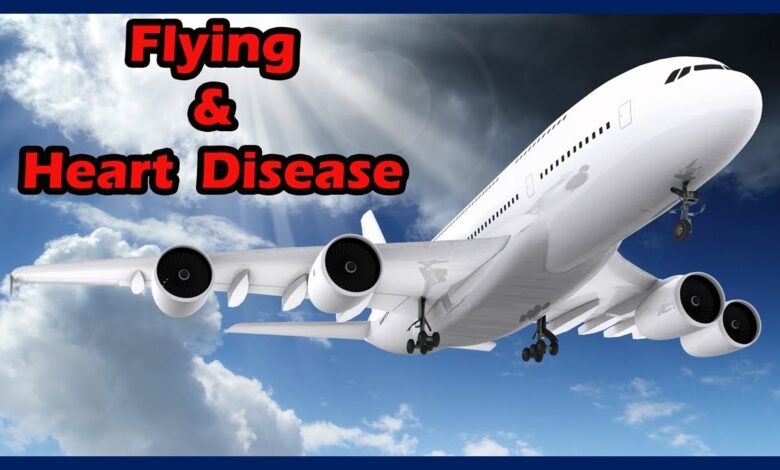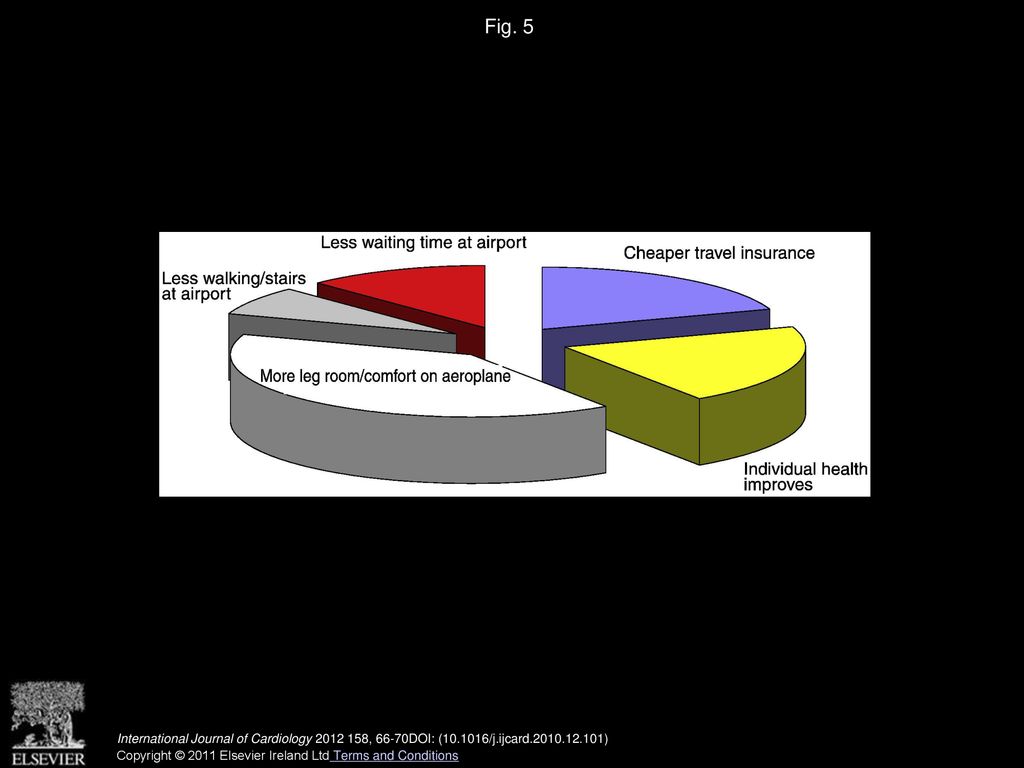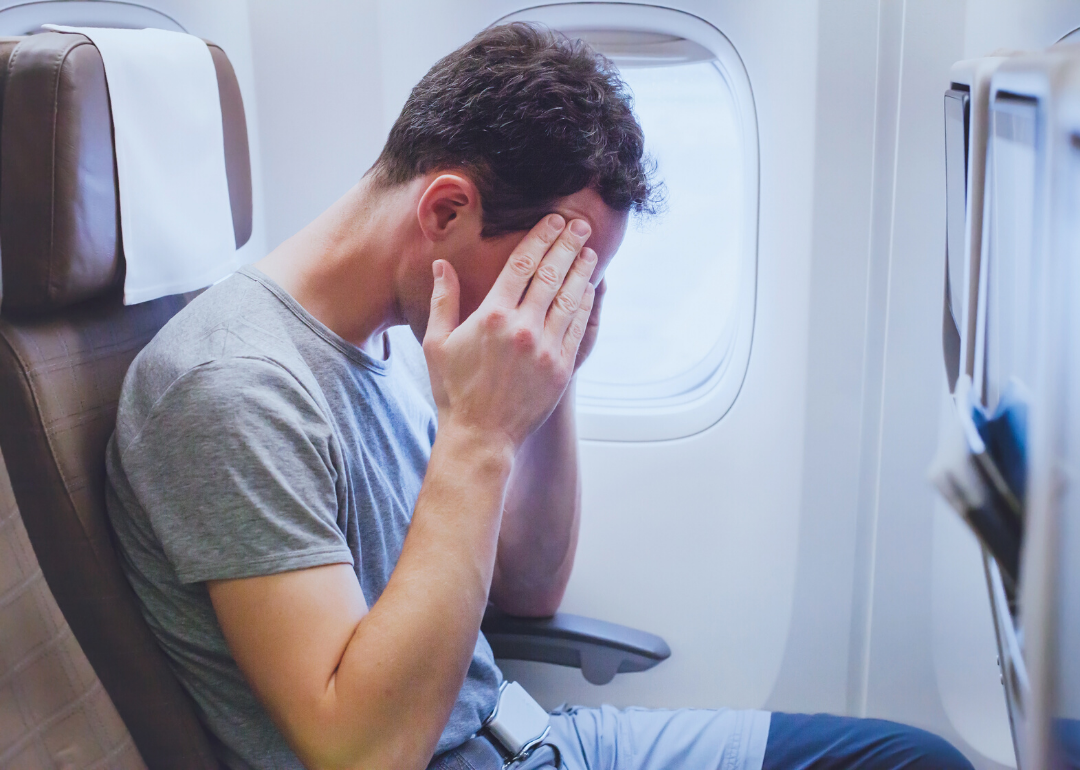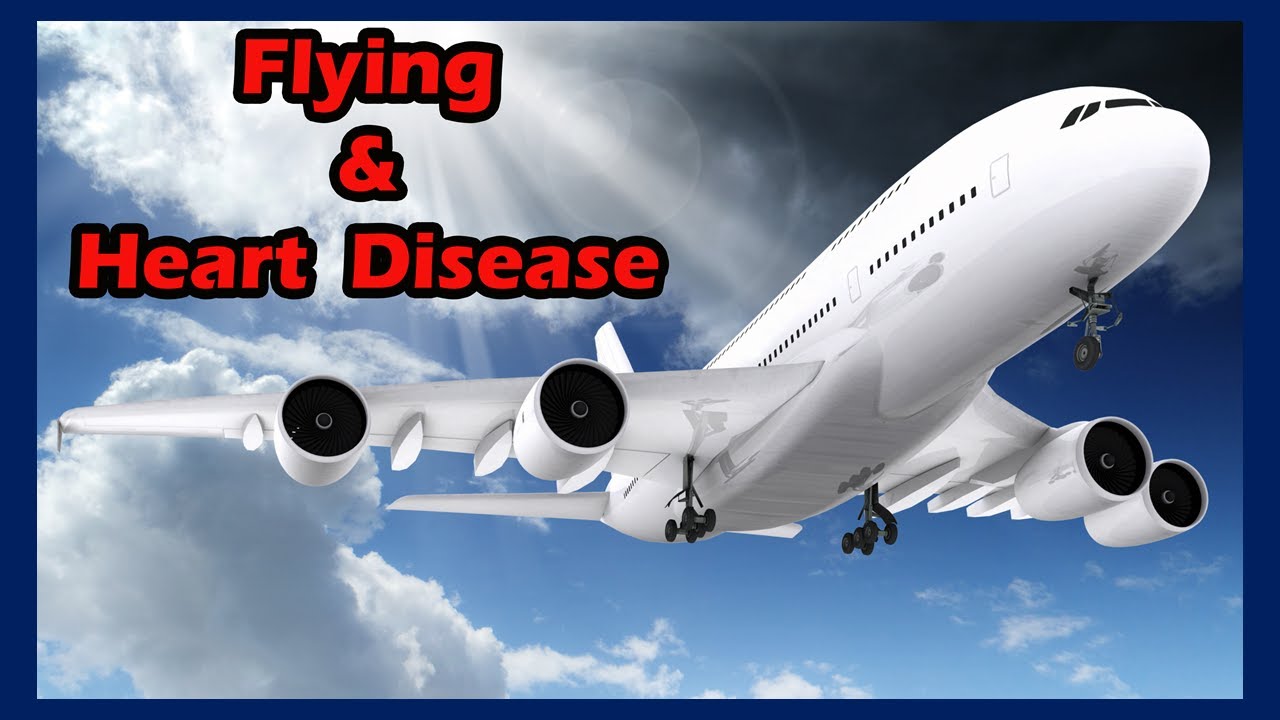
Flying with High Blood Pressure Impact & Management
Impact of flying or travelling with high blood pressure and management tips – Flying with High Blood Pressure: Impact & Management – that’s a topic close to my heart (and my blood pressure!). Seriously though, air travel can be tricky when you’re managing hypertension. Changes in air pressure, cramped seating, and stress can all impact your health. This post dives into the risks, offers practical tips for managing your medication and anxiety during flights, and explores alternative travel options.
Let’s get started!
We’ll cover everything from pre-flight doctor visits and packing your meds safely, to in-flight strategies like hydration and relaxation techniques. We’ll also discuss the differences between short and long-haul flights and how to choose the best mode of transport for your needs. Because your well-being is paramount, we’ll explore ways to minimize risks and maximize comfort, no matter where your travels take you.
Risks of Air Travel with High Blood Pressure

Source: slideplayer.com
Air travel, while convenient, presents unique challenges for individuals with high blood pressure (hypertension). The changes in cabin pressure, reduced humidity, and prolonged periods of immobility can exacerbate existing cardiovascular issues, increasing the risk of serious complications. Understanding these risks is crucial for informed decision-making and proactive management.
Physiological Effects of Air Travel on the Cardiovascular System
The lower air pressure at high altitudes in an airplane cabin can cause dehydration, which thickens the blood. This, combined with the reduced oxygen levels and the sedentary nature of air travel, increases the workload on the heart and circulatory system. For individuals with hypertension, this added stress can lead to significant cardiovascular strain. The body’s natural response to lower oxygen levels is to increase heart rate and blood pressure, potentially pushing already elevated blood pressure to dangerous levels.
Furthermore, the cramped seating and limited movement contribute to poor circulation, increasing the risk of blood clots.
Increased Risk of Thrombosis, Stroke, and Heart Attack
The combination of dehydration, reduced oxygen levels, and immobility during air travel significantly increases the risk of deep vein thrombosis (DVT), a condition where blood clots form in the deep veins of the legs. These clots can travel to the lungs, causing a life-threatening pulmonary embolism. For individuals with hypertension, the already increased risk of blood clot formation is further amplified.
Additionally, the strain on the cardiovascular system during flight can trigger or worsen existing conditions, leading to an increased risk of stroke or heart attack. The prolonged periods of inactivity can also contribute to the development of arrhythmias in susceptible individuals.
Risk Comparison: Short-Haul versus Long-Haul Flights
The duration of the flight significantly impacts the risk. While short-haul flights pose some risk, the increased duration of long-haul flights exponentially increases the chances of developing complications. The prolonged period of immobility and dehydration associated with long-haul flights contribute to a greater buildup of stress on the cardiovascular system. Consequently, individuals with hypertension should take extra precautions before, during, and after long-haul flights.
Short flights still present a risk, however, and should not be dismissed lightly.
Risk Factors for Different Blood Pressure Levels During Air Travel
The following table summarizes the relative risks associated with different blood pressure levels during air travel. It’s important to remember that these are general risk levels and individual risk can vary depending on other health factors and lifestyle choices. Consult your doctor for personalized advice.
| Blood Pressure Level | Risk of Thrombosis | Risk of Stroke | Risk of Heart Attack |
|---|---|---|---|
| Normal (<120/80 mmHg) | Low | Low | Low |
| Prehypertension (120-139/80-89 mmHg) | Moderate | Moderate | Moderate |
| Stage 1 Hypertension (140-159/90-99 mmHg) | High | High | High |
| Stage 2 Hypertension (≥160/≥100 mmHg) | Very High | Very High | Very High |
Medication Management During Air Travel
Air travel presents unique challenges for individuals managing high blood pressure. Fluctuations in cabin pressure and the stress of travel itself can impact blood pressure levels, making careful medication management crucial for a safe and comfortable journey. Understanding how to properly handle your medications during air travel is essential for maintaining your health and wellbeing.Proper medication management is paramount for individuals with high blood pressure during air travel.
This involves careful consideration of dosage timing, safe transportation methods, and potential altitude-related interactions with specific medications. Failing to plan adequately can lead to uncomfortable, and potentially dangerous, consequences.
Dosage Timing and Medication Schedule
Maintaining your regular blood pressure medication schedule is critical throughout your journey. Ideally, take your medication at your usual times, regardless of the time zone changes. If significant time zone differences necessitate adjustments, consult your doctor beforehand to develop a safe and effective plan. For example, a long-haul flight across multiple time zones might require pre-emptive adjustments to your medication schedule to avoid missed doses or unintended consequences.
Remember to bring a detailed medication schedule with you.
Altitude and Medication Interactions
Altitude can affect the body’s response to certain blood pressure medications. While the impact varies depending on the medication and individual, some medications may become less effective at higher altitudes. Others might have amplified effects. It’s crucial to discuss this with your doctor, especially if you’re traveling to high-altitude destinations. They can advise on any necessary adjustments or alternative medications to ensure your safety.
For instance, some diuretics might be less effective at high altitudes due to changes in fluid balance.
Carrying Sufficient Medication and Doctor’s Note
Always carry a sufficient supply of your medication to last throughout your trip, plus a few extra days in case of unexpected delays. Pack your medication in your carry-on luggage to avoid potential loss or damage to your checked baggage. A doctor’s note clearly outlining your condition, medication details, and dosage instructions is highly recommended. This note can be invaluable in case of any medical emergencies or interactions with airport security or customs officials.
It provides verifiable proof of your medical needs and the necessity of carrying a substantial quantity of medication.
Securely Packing and Transporting Blood Pressure Medication
Safe and secure transportation of your medication is vital. Here are some steps to ensure your medications remain safe and accessible throughout your journey:
- Keep your medication in its original, clearly labeled container.
- Pack your medication in your carry-on bag, not in checked luggage.
- Store your medication in a secure, easily accessible place within your carry-on bag.
- Consider using a medication organizer or pill dispenser to simplify dosage management.
- Bring a copy of your prescription and a list of your medications with you.
- If traveling internationally, check the regulations of your destination country regarding the importation of medications.
In-Flight Strategies for Managing High Blood Pressure

Source: stacker.com
Air travel, with its changes in cabin pressure and potential for stress, can significantly impact blood pressure. Taking proactive steps during your flight is crucial for managing your condition and ensuring a comfortable journey. By focusing on hydration, movement, and relaxation techniques, you can minimize the negative effects of air travel on your health.
In-Flight Activities to Mitigate Blood Pressure Effects
Maintaining a healthy blood pressure during a flight involves a combination of physical activity, mindful relaxation, and consistent hydration. Staying active helps improve circulation, while relaxation techniques counteract the stress often associated with air travel. Adequate hydration prevents dehydration, a known contributor to blood pressure fluctuations. These strategies work synergistically to help manage your blood pressure throughout the flight.
Stress and Anxiety Management During Air Travel
Air travel can trigger stress and anxiety, both of which can elevate blood pressure. Practicing relaxation techniques is key to mitigating these effects. Deep breathing exercises, for instance, can calm your nervous system and lower your heart rate, thereby reducing blood pressure. Listening to calming music or engaging in guided meditation can also provide a sense of peace and control.
Consider bringing a favorite book or engaging in a relaxing hobby to distract yourself from potential stressors. Remember, maintaining a positive and calm mindset is a powerful tool in managing your blood pressure.
In-Flight Hydration Strategies
Proper hydration is paramount for managing blood pressure during air travel. The dry air in airplane cabins can lead to dehydration, which can exacerbate high blood pressure. Prioritize consuming plenty of water throughout the flight. Avoid excessive caffeine and alcohol, as these can dehydrate you and further impact your blood pressure. Consider bringing electrolyte-rich drinks, such as diluted fruit juice, to replenish lost electrolytes.
Aim for at least one 8-ounce glass of water every hour or two, depending on the flight duration.
Deep Breathing Exercises for Blood Pressure Reduction
Visual Guide to Deep Breathing: Imagine a balloon slowly inflating in your belly. * Inhale: Slowly and deeply inhale through your nose, feeling your belly expand as the balloon inflates. Count to four as you inhale. Your chest should remain relatively still, focusing the breath in your abdomen.
Hold
Hold your breath for a count of two, maintaining the expanded feeling in your belly.
Exhale
Slowly exhale through your mouth, feeling your belly deflate like the balloon losing air. Count to four as you exhale. Again, focus on the abdominal movement.
Repeat
Repeat this cycle at least five to ten times, several times throughout the flight. Find a comfortable position, close your eyes if it helps, and focus on the rhythm of your breath. This controlled breathing technique helps to slow your heart rate and reduce stress, thereby contributing to blood pressure management.
Pre-Flight and Post-Flight Considerations
Flying with high blood pressure requires careful planning and attention to detail both before and after your journey. Neglecting these crucial steps can significantly increase the risk of complications. This section Artikels key actions to minimize blood pressure-related risks during and after air travel.Pre-flight and post-flight actions are crucial for managing blood pressure fluctuations related to air travel.
These steps, when combined with in-flight management strategies, create a comprehensive approach to safe air travel for individuals with hypertension.
Importance of Pre-Flight Consultation with a Doctor
A consultation with your doctor before any air travel is paramount, especially for individuals with severe hypertension or other underlying health conditions. This visit allows your doctor to assess your current health status, review your medication regimen, and advise on any necessary adjustments or precautions for air travel. They can also provide specific guidance based on your individual needs and the length of your flight, potentially recommending additional tests or suggesting alternative travel arrangements if necessary.
For example, someone with poorly controlled hypertension might be advised to postpone their trip until their blood pressure is better managed, or they might receive specific recommendations for managing their condition during the flight.
Recommended Pre-Flight Blood Pressure Monitoring
Regular blood pressure monitoring in the days leading up to your flight is essential. This allows you to track your blood pressure and identify any significant fluctuations that might require adjustments to your medication or even a delay in travel. Ideally, you should monitor your blood pressure daily for a week before your flight, recording the readings in a log.
This provides a baseline for comparison and allows your doctor to assess any trends. If you notice any significant increases or decreases in your blood pressure, consult your doctor immediately.
Recommended Post-Flight Blood Pressure Monitoring
Monitoring your blood pressure continues to be important after your flight. The changes in altitude and cabin pressure can cause temporary fluctuations. Checking your blood pressure regularly for a few days after your return helps ensure that it has returned to your normal range. Significant deviations should be reported to your doctor promptly. For example, a persistent elevation in blood pressure after a long-haul flight might necessitate a follow-up appointment and potential medication adjustments.
Recovery Periods After Short-Haul and Long-Haul Flights
Recovery periods vary significantly depending on the length of the flight and the individual’s overall health. Short-haul flights (under 3 hours) typically cause minimal disruption, and most individuals with well-managed hypertension experience a quick return to their baseline blood pressure. However, for long-haul flights (over 6 hours), the recovery period might extend to several days. Dehydration, prolonged sitting, and changes in cabin pressure can contribute to longer recovery times.
Individuals should listen to their bodies and rest adequately after a long-haul flight. If symptoms such as persistent headache, dizziness, or elevated blood pressure persist, seeking medical attention is advisable. For instance, a person with poorly controlled hypertension might experience more pronounced symptoms and require a longer recovery period after a long-haul flight compared to someone with well-managed hypertension.
Alternative Travel Options for Individuals with High Blood Pressure

Source: s-eigamura.jp
Managing high blood pressure while traveling can be challenging, especially with the added stress of air travel. Fortunately, there are alternative travel options that can significantly reduce stress and minimize the risk of blood pressure spikes. Choosing a travel method that prioritizes comfort and minimizes stress is crucial for individuals managing their hypertension.
For those with high blood pressure, the journey itself can be a significant factor in managing their condition. The best mode of transport will depend on individual circumstances, such as the distance to be travelled and personal tolerance for different types of travel. However, by carefully considering the advantages and disadvantages of each option, individuals can make informed decisions that prioritize their health and well-being.
Train Travel Compared to Air Travel and Road Trips
Train travel offers a more relaxed and less stressful alternative to air travel. The spacious seating, ability to move around freely, and generally smoother ride can contribute to lower stress levels, potentially reducing blood pressure fluctuations. Road trips, while offering flexibility, can be tiring and stressful, especially for long journeys. They may involve extended periods of sitting and potential traffic delays.
A comparison of these three modes of transport is presented below.
| Mode of Transport | Duration | Stress Levels | Opportunities for Movement |
|---|---|---|---|
| Air Travel | Generally shorter for long distances, but includes time spent at the airport and security. | Can be high due to crowds, security checks, confined spaces, and potential delays. | Limited; mostly confined seating. |
| Train Travel | Generally longer than air travel for long distances, but often more consistent. | Typically lower than air travel; more spacious and less crowded. | More opportunities to walk around the carriage. |
| Car Travel (Road Trip) | Highly variable depending on distance and traffic. | Can be high due to traffic, driving stress, and long periods of sitting. However, it can be customized to the traveler’s pace. | Opportunities to stretch and walk during stops, but limited while driving. |
Modifying Travel Plans for Blood Pressure Management, Impact of flying or travelling with high blood pressure and management tips
Careful planning is essential to minimize the impact of travel on blood pressure. This includes breaking long journeys into shorter segments with regular rest stops, especially for road trips. For train journeys, booking seats with extra legroom can improve comfort and reduce potential discomfort. Regardless of the chosen mode of transport, scheduling regular breaks to walk around and stretch is highly recommended to improve circulation and reduce stiffness.
Prioritizing relaxation techniques such as deep breathing exercises or meditation can also help manage stress levels during travel. For example, instead of a direct 12-hour flight, one could choose a route with a layover allowing for a break and a chance to walk around the airport. This break can significantly reduce the physical stress of prolonged sitting.
Summary
So, whether you’re planning a quick weekend getaway or a long-awaited international trip, remember that managing your high blood pressure while traveling is entirely possible. By understanding the risks, planning ahead, and implementing the strategies we’ve discussed, you can enjoy your journey with peace of mind. Prioritize your health, listen to your body, and don’t hesitate to consult your doctor for personalized advice.
Safe travels!
Essential FAQs: Impact Of Flying Or Travelling With High Blood Pressure And Management Tips
Can I fly if my blood pressure is slightly elevated?
It’s best to consult your doctor before flying if your blood pressure is even slightly elevated. They can assess your individual risk and advise on whether it’s safe to travel.
What should I do if my blood pressure spikes during a flight?
If you experience a significant blood pressure spike during a flight, notify a flight attendant immediately. They can assist you and contact medical personnel if necessary. Deep breathing exercises and remaining calm can also help.
Are there specific medications I should avoid taking before flying?
Some blood pressure medications can interact negatively with altitude changes. Discuss this with your doctor before your trip to ensure you’re on the safest regimen for air travel.
How can I manage stress while traveling with high blood pressure?
Pack relaxation aids like calming music or a meditation app. Practice deep breathing exercises and prioritize getting enough sleep before and during your travels to help manage stress levels.
